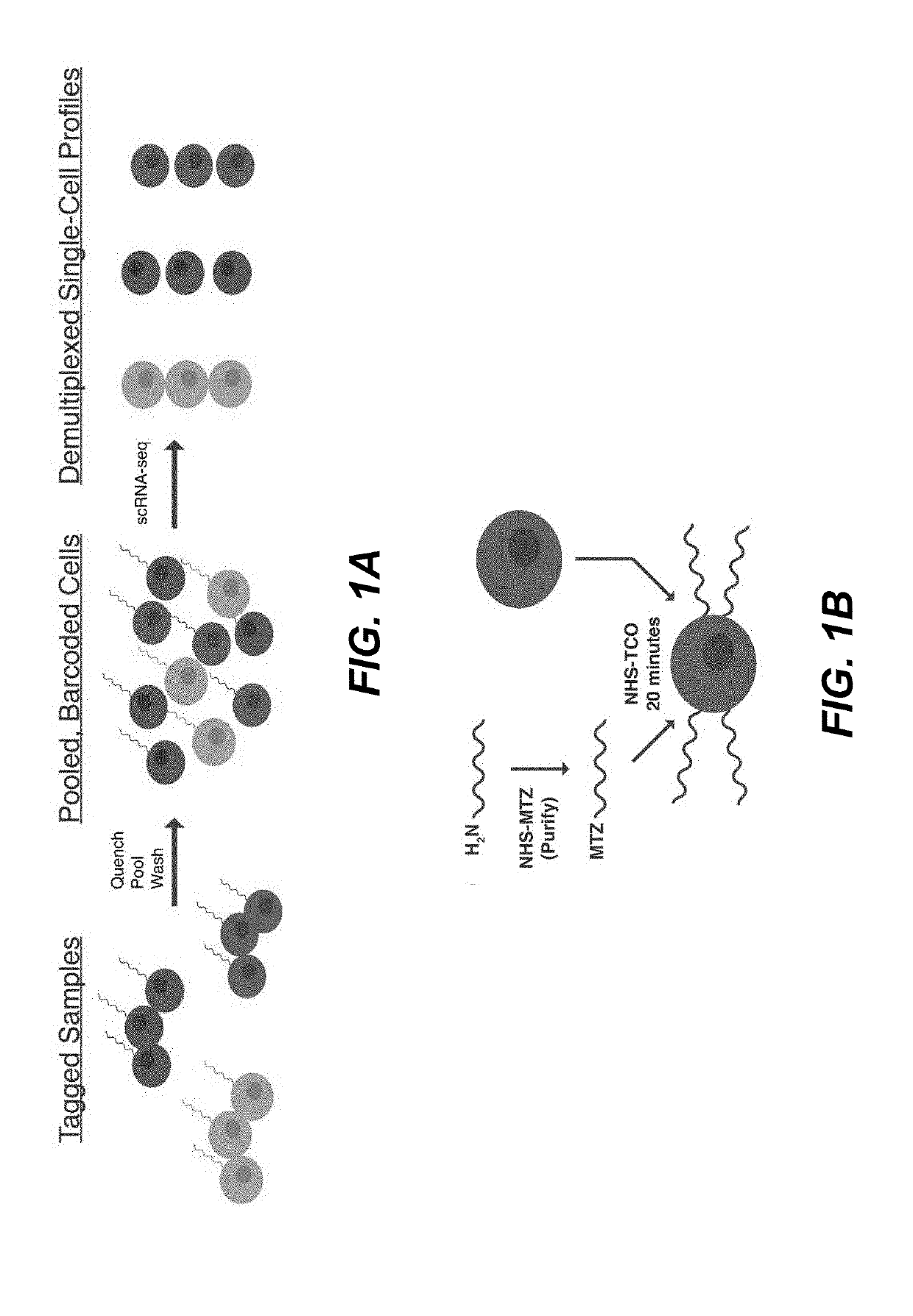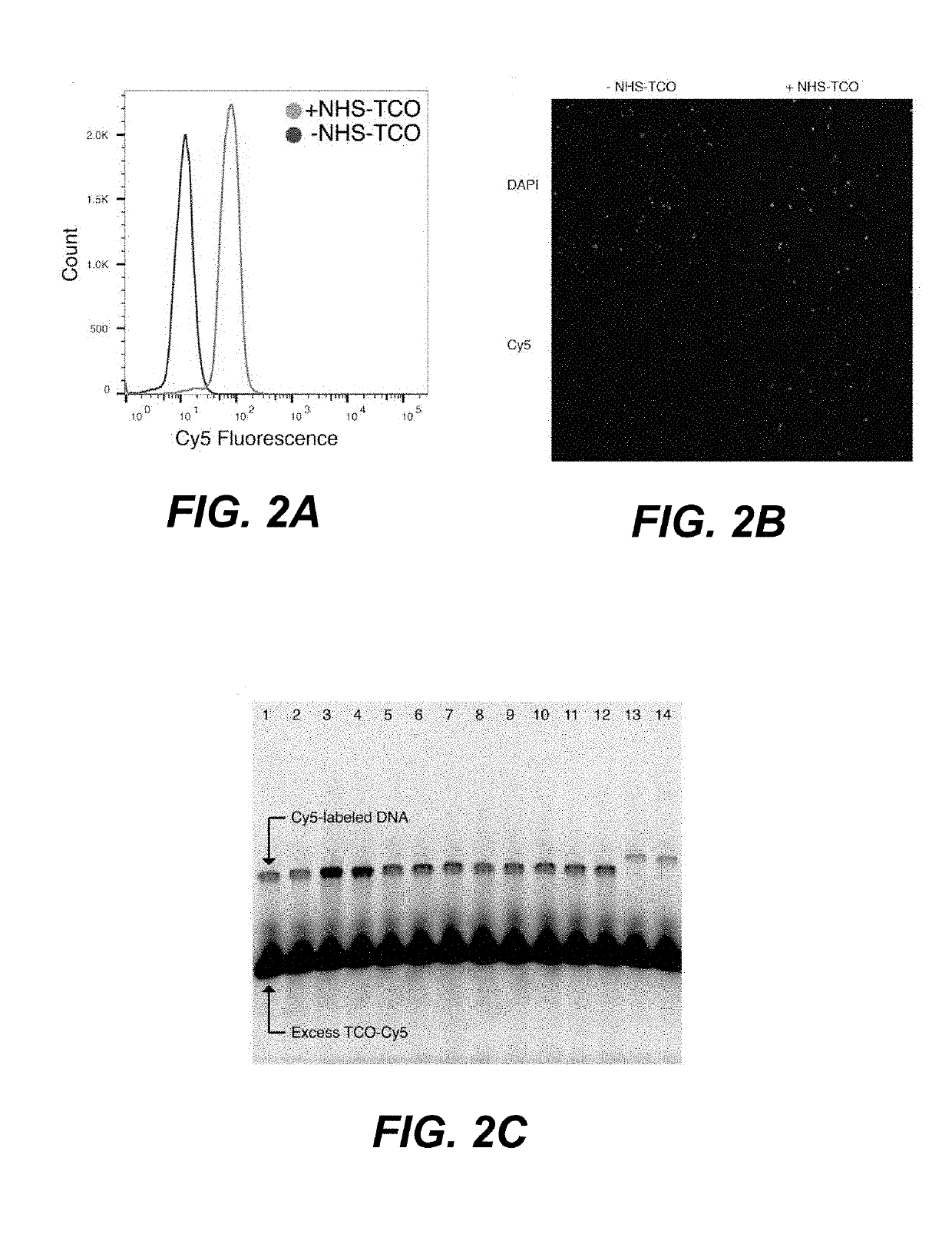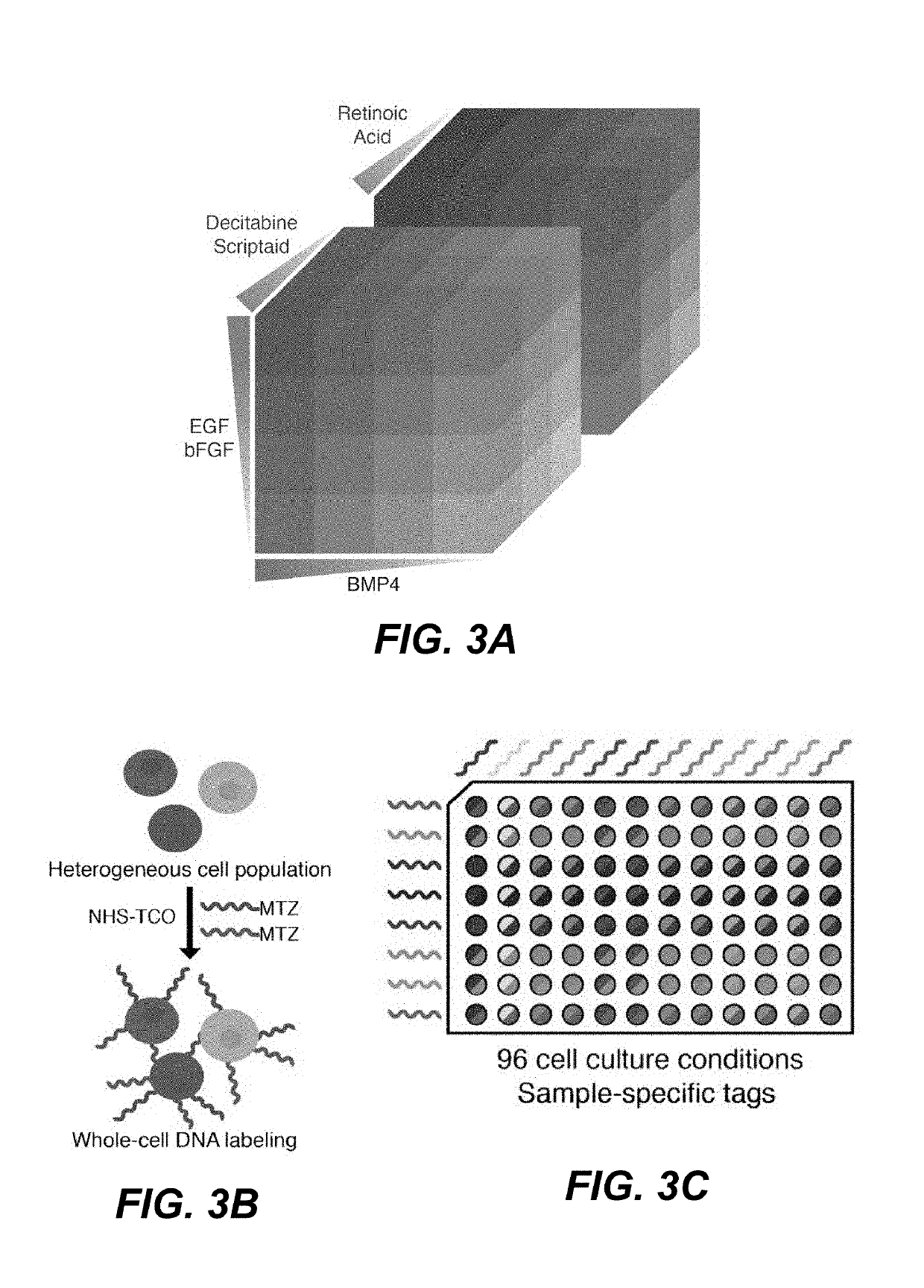Sample multiplexing for single-cell RNA sequencing
a single-cell rna and sequencing technology, applied in the field of molecular biology, can solve the problems of high reagent cost, batch effect, affecting the sequence quality of samples, and limiting the number of samples that can be assayed by researchers, so as to reduce the cost of sequence analysis and reduce the batch effect
- Summary
- Abstract
- Description
- Claims
- Application Information
AI Technical Summary
Benefits of technology
Problems solved by technology
Method used
Image
Examples
example 1
Optimization of the Sample Tagging Method
[0120]The sample tagging approach was evaluated and optimized using microscopy and flow cytometry. Fluorescent chemical probes were used to screen reaction conditions, and promising reaction conditions were confirmed by fluorescence in situ hybridization (FISH). It was found that a large number of oligonucleotides could be immobilized onto the target cells in less than 20 minutes under both physiological aqueous and methanol fixation conditions. FIGS. 2A-2B depict the results of direct yeast cell labeling with Inverse Electron-Demand Diels-Alder (IEDDA) chemistry. As depicted in FIG. 2A, yeast cells were fluorescently labeled in a one-pot, two-step reaction with NHS-TCO and MTZ-Cy5 (while control reactions omitting NHS-TCO failed to generated Cy5-fluorescent cells). Further, fluorescence microscopy of yeast cells labeled with NHS-TCO and MTZ-Cy5 showed labeling only in the presence of NHS-TCO cross-linker (FIG. 2B). MTZ-DNAs were reacted with...
example 2
96-Plex scRNA-Seq Perturbation Experiment
[0123]To showcase the power of the method of performing multiplex scRNA-seq provided herein, the differentiation response of neural stem cells to a large array of growth factor concentrations and combinations was explored. Such an experiment, which produces a unique cell population in each condition, would be technically and financially inaccessible without a cost-effective means of sample pooling.
[0124]Neural stem cells (NSCs) are known to differentiate into many unique cell types in vivo, primarily neurons, astrocytes, and oligodendrocytes. In vitro, NSCs can be forced into different differentiation trajectories by exposing the cells to a variety of synthetic chemicals, hormones, and growth factors. The response of NSCs to varying concentrations of Scriptaid / Decitabine, epidermal growth factor (EGF) / basic fibroblast growth factor (bFGF), retinoic acid, and bone morphogenic protein 4 (BMP4), was investigated by producing a 4×4×6 perturbation...
example 3
Multiplexing Live and Fixed Cell Samples
[0131]To further validate the sample multiplexing method disclosed herein and explore its limits, a multiplexing experiment in which four samples of live mouse neural stem cells (NSCs) and four samples of methanol-fixed NSCs were each labeled with unique sets of two methyltetrazine-modified sample tags was undertaken. The samples were then quenched, pooled, and processed with the 10× Genomics Single-Cell Gene Expression Kit. FIGS. 6A-6B illustrate exemplary BioAnalyzer traces for fragmented cDNA libraries (FIG. 6A) and sample tag libraries (FIG. 6B). Analysis of sample tag profiles from methanol-fixed cells recapitulated matched pairs of sample tags, indicating efficient single-cell labeling, and permitting facile sample demultiplexing (FIG. 7). FIG. 7A depicts a heatmap showing 3,768 detected cells originating from four methanol-fixed samples each labeled by a pair of sample-specific tags. Cell doublet events were unambiguously detected as co...
PUM
| Property | Measurement | Unit |
|---|---|---|
| temperature | aaaaa | aaaaa |
| temperature | aaaaa | aaaaa |
| temperature | aaaaa | aaaaa |
Abstract
Description
Claims
Application Information
 Login to View More
Login to View More - R&D
- Intellectual Property
- Life Sciences
- Materials
- Tech Scout
- Unparalleled Data Quality
- Higher Quality Content
- 60% Fewer Hallucinations
Browse by: Latest US Patents, China's latest patents, Technical Efficacy Thesaurus, Application Domain, Technology Topic, Popular Technical Reports.
© 2025 PatSnap. All rights reserved.Legal|Privacy policy|Modern Slavery Act Transparency Statement|Sitemap|About US| Contact US: help@patsnap.com



